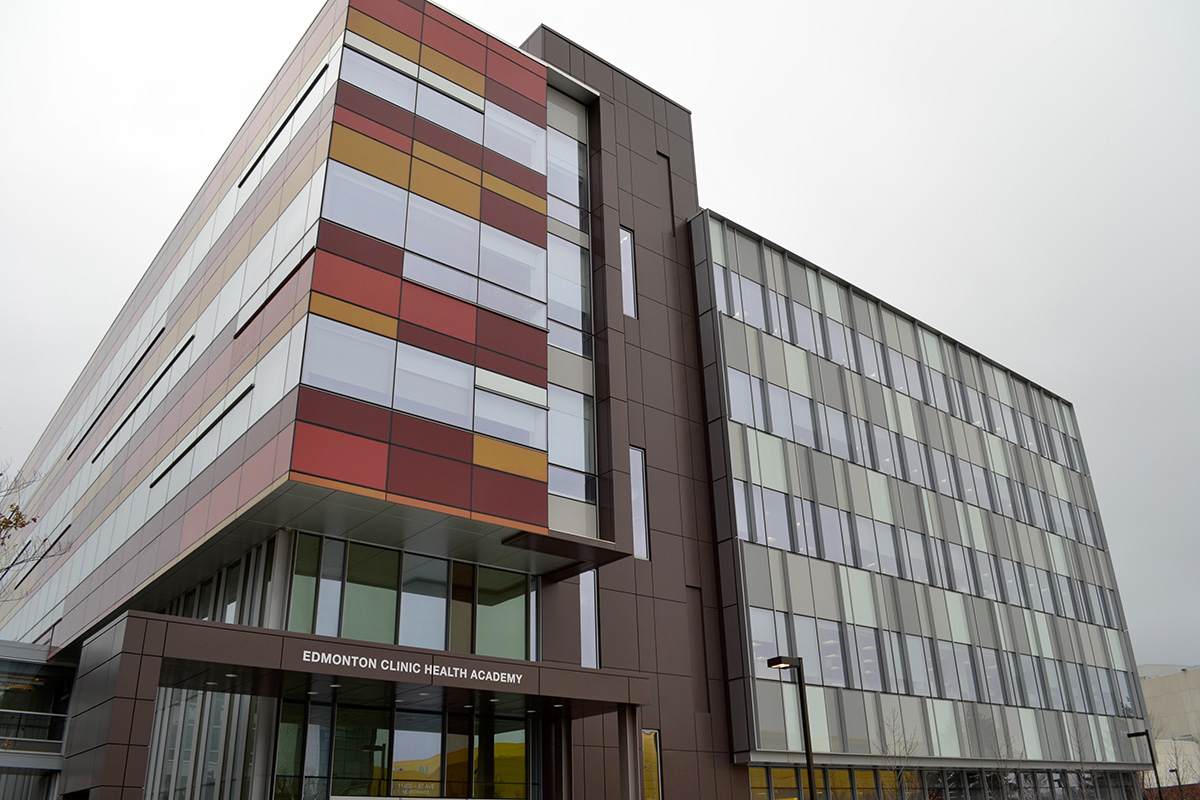Gift to Health Sciences Library kickstarts library modernization project
The gift from Geoffrey and Robin Sperber will be used to move the Health Sciences Library to ECHA and to modernize the library space
 Willow Austin
Willow AustinThe University of Alberta has received a gift of historic magnitude to reimagine the John W. Scott Health Sciences Library.
The gift from Geoffrey and Robin Sperber comes amidst library plans already underway to relocate the Health Sciences Library across two floors in the Edmonton Clinic Health Academy building, moving from its current location in the Walter C. Mackenzie Health Sciences Centre. Accompanying the move will be a major transformation of the library’s collection, reflecting changing needs and uses of library spaces in the 20th century.
Geoffrey Sperber, a professor in the dentistry program from 1961 to 1996, remains an active member and philanthropic supporter of the health sciences academic community. Previously, Sperber curated the Dentistry History Museum Collection for 35 years, which features artifacts from the U of A’s history of teaching dentistry and the practise in Alberta.
The Sperber’s have requested that the exact amount of the gift not be revealed and have also allocated funds to an endowment to keep the Dentistry History Museum Collection up to date, and to create display spaces for it.
According to the U of A’s chief librarian Dale Askey, the gift is one of the largest in the library’s history, adding that it will allow the library to “dream a bit bigger.”
“This is a chance to offer the university a vision of what a future library can look like. When you have a gift like this, it ups the ante on the outcome. You’re going to get a better library — to put it gently — when you have this kind of philanthropy supporting it,” Askey said.
“He feels a very strong connection to the library as something really important for his success as a faculty member. He understands the importance of a strong Health Sciences Library,” Askey said.
For Askey, the gift from Sperber’s is simply a reflection of the couple’s beliefs and values.
“When someone gives to the library like that, it’s a big deal,” he said. “It amazes me, actually, when people who’ve been faculty at universities and have been fortunate to generate a comfortable living for themselves, turn around and support the institution. What they choose to support says a lot about them as people, what they care about, and their values and interests.”
Much of the existing Health Sciences collection will be moved to U of A’s storage facility, the Research and Collections Resource Facility, which houses less frequently used items from the University’s main campus libraries.
The new Health Sciences Library will feature just 80,000 titles, a fraction of the current library’s 200,000.
“In fact, a lot of our libraries have already gone that way. The amount of collections at Cameron or Rutherford is not what it was 15 to 20 years ago. There has been a steady division of the collection between the campus libraries and the storage facility.”
“It’s an inevitability to some degree. The existing library was built when the focus was on creating space for physical collections,” Askey added.
The use of library spaces has changed as the priority shifted from physical collections to study spaces.
“Those spaces have been reclaimed just to be student study spaces, but they tend to be unplanned swaths of space,” Askey said. “The new library will not be as large, but it will actually be a better place for people to work because it’s going to be designed around how we work and how libraries function in 2020.”
Study spaces, group study rooms, more technology, and possible quasi-lab spaces are all part of the vision for the modernized Health Sciences Library space.
“I envision something like the [Cameron Library] Digital Scholarship Centre, but adapted to the health sciences environment,” Askey added.
The first steps in the project are already underway, including community consultation and functional space planning for the modernized library, with 2024 as the expected completion date.
“It’s exciting to have an opportunity to take an existing facility and recreate it in another building. I think it’s going to be quite transformative.”




